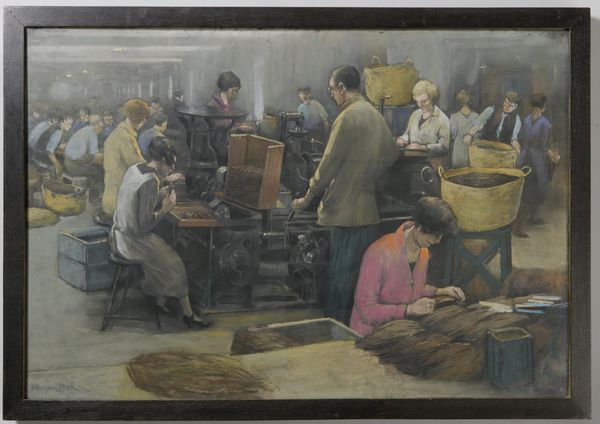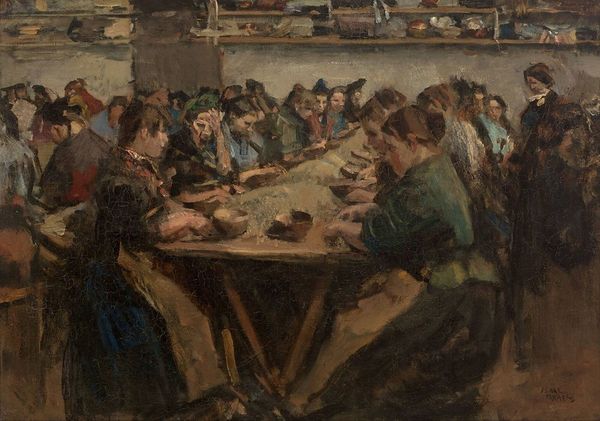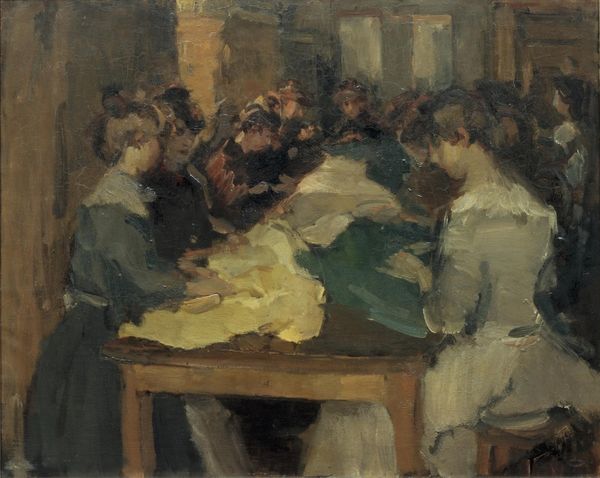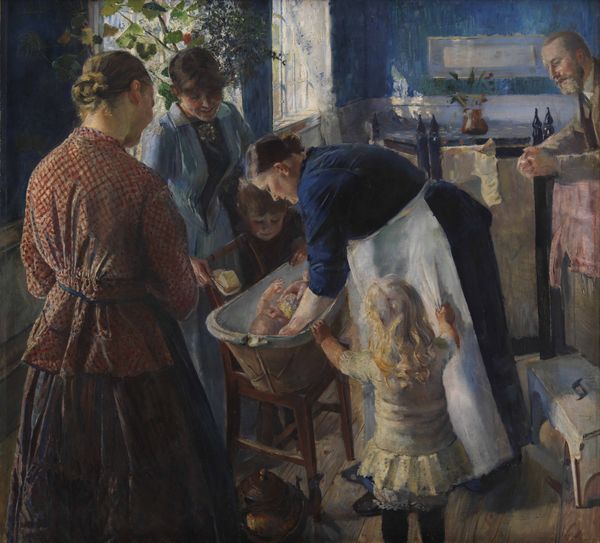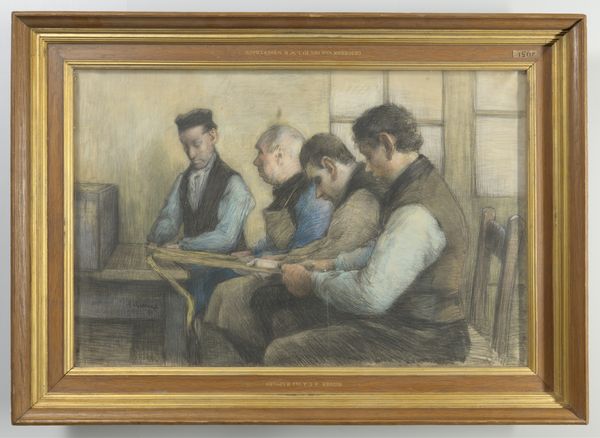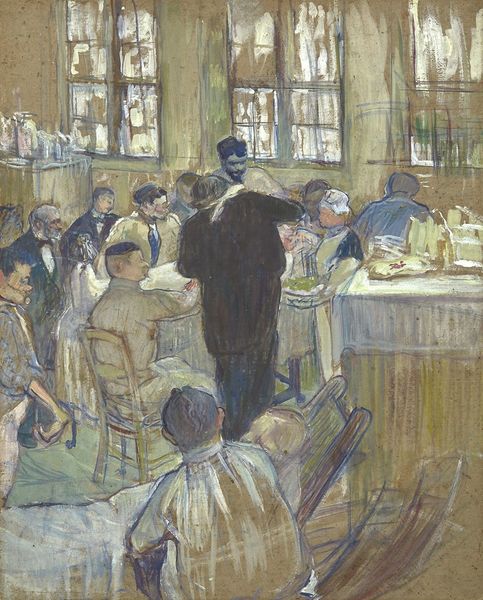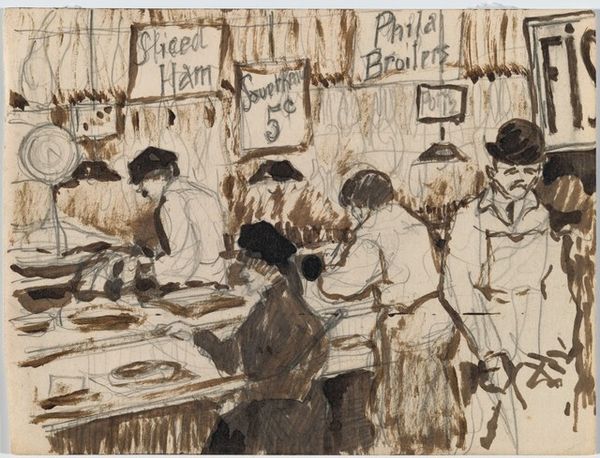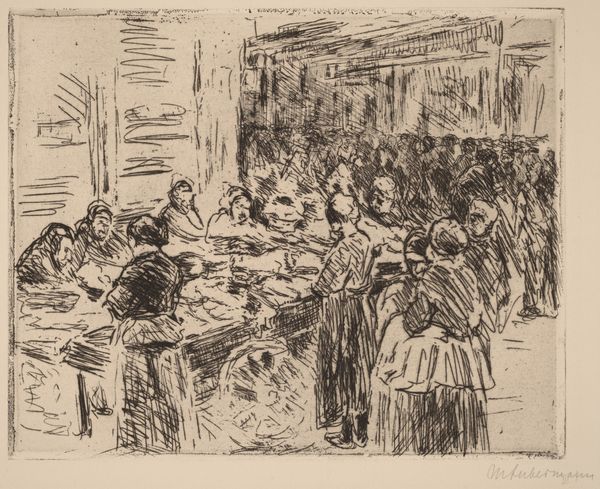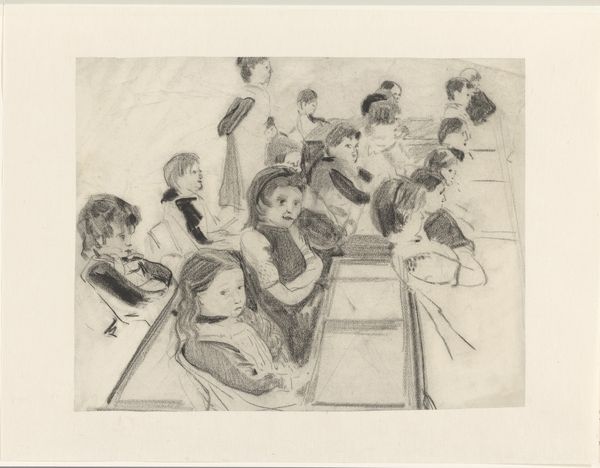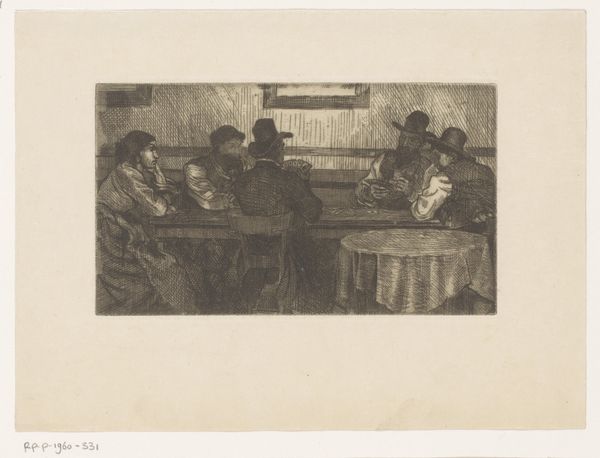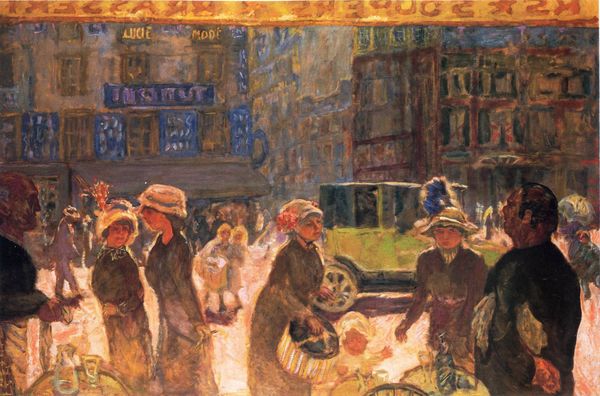
Dimensions: height 490 mm, width 602 mm
Copyright: Rijks Museum: Open Domain
Curator: Let’s turn our attention to Hendrik Jan Wolter’s drawing, “Confectieatelier in de Amsterdamse Pijp,” circa 1920. Editor: Immediately, I'm struck by the quiet intensity in the room, almost like a church. It's muted, filled with industriousness. What I'd call a blue-grey symphony in pastel. Curator: Indeed. Wolter's impressionistic approach captures more than just appearances. Note the materials: what seems to be a colored pencil and pastel work. It offers a window into the working conditions in Amsterdam's Pijp district at the time, focusing on the often overlooked labor within. It seems as though those soft pastel strokes portray the exhausting daily labor in confection. Editor: The composition really emphasizes that endless labor – the receding lines of workers, all bent over their sewing. You can almost feel the monotony in the air. But consider how each individual maintains their autonomy in what appears to be shared material. Their clothing is subtly different; the faces show different levels of fatigue or even boredom! Each person is bringing themself into a collective project, or labor. Curator: Yes, while the factory setting represents a cog in a capitalist machine, Wolter doesn't strip these workers of their individuality. Look at the hands. There are dozens of hands within this one artwork that hold and manipulate their instruments. Some grasp fabric, some hold sewing implements, while others support the larger structures surrounding them. It is like he wanted to emphasize not the uniformity, but the diversity of skills in labor! Editor: And look at the fabric itself – piles of cloth in browns, blues, creams, dominating their workspaces. You realize it is through the manipulation of material that the labor, and then its capital, exists. Curator: I agree; in choosing this subject, Wolter elevated the everyday lives of these women—mostly anonymous and unrecognized—by representing their craft with such dedication. Editor: It really makes you consider the things we wear. This drawing gives voice to all the hidden labour behind our things!
Comments
No comments
Be the first to comment and join the conversation on the ultimate creative platform.
